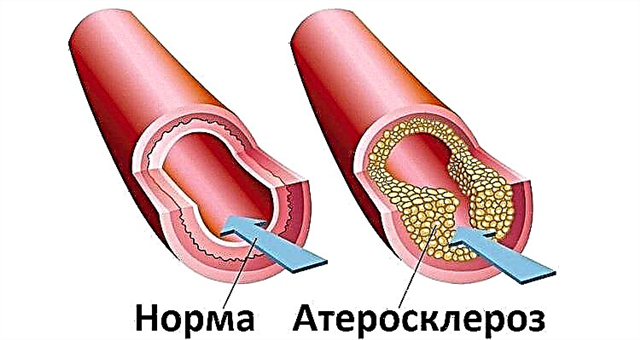Objective signs and behavior of the child play an important role in the diagnosis of diseases in newborns. In cases where an adult patient may complain of weakness, malaise, the baby will be lethargic, whining, capricious. As in adult patients, many pathological conditions in children are accompanied by loss of appetite. The presence of this symptom must be taken into account in order to determine further tactics.

As for the objective signs, changes in the skin, dysfunction of any organ, the presence of vomiting, diarrhea, the development of hyperthermia are objective symptoms that characterize the processes occurring in both adults and children. Diagnosis of diseases characterized by such factors is straightforward. The situation with the interpretation of children's complaints is more complicated. Particular difficulties arise in cases where the affected organ is not available for objective study, and it is necessary to suspect it in order to prescribe timely correct treatment.
Child behavior for ear pain
Otitis media is a condition where the initial and main symptom is the patient's subjective complaint of ear pain. In the presence of such a symptom in older children and adults, it is not difficult to clarify the diagnosis. Consultation of an ENT doctor, conducting an otoscopy by him allows to establish a diagnosis and prescribe the correct treatment in a short time.
How to understand that a baby has ear pain is a more difficult task. In this case, close observation of the patient can be of assistance.
Children over one year old, in the presence of pain syndrome, try to touch the affected ear, scratch the lobe.
Due to their age, newborns behave somewhat differently. For a baby, the manifestation of pain in the ear is the following signs:
- children become extremely restless and moody;
- turn their head;
- cry out periodically;
- trying to take a forced position in bed, lying on the affected ear, or rub the pillow with it.
Usually otitis media is accompanied by symptoms of intoxication. The child during this period becomes lethargic, apathetic.
Inflammation of the ear is characterized by such a pronounced pain syndrome that children rush about in bed, cry and scream.
 Another sign of how to understand that the baby's ears are hurting is not just a decrease in appetite, but the baby's refusal to suckle. During this process, pain sensations increase, so the child who starts sucking movements refuses to eat with crying or screaming.
Another sign of how to understand that the baby's ears are hurting is not just a decrease in appetite, but the baby's refusal to suckle. During this process, pain sensations increase, so the child who starts sucking movements refuses to eat with crying or screaming.
Additional signs
The presence of hyperthermia can help clarify the diagnosis.
Otitis media is characterized by an increase in body temperature up to 38-39 degrees.
The absence of hyperthermia is atypical for otitis media. Otitis externa is accompanied by the development of a local temperature reaction. The auricle and the external auditory canal at the same time look reddened, edematous. Touching such an ear causes increased pain.
Suppuration
The most informative symptom confirming the presence of inflammation of the middle ear in a child is rupture of the tympanic membrane and the resulting suppuration.
This symptom is characteristic only for purulent inflammation of the ear, but even with this development it is not permanent. The existing purulent contents of the tympanic cavity can find a way out, bypassing the opening in the tympanic membrane, and carry it out through the auditory tube. Those cases when a yellowish sticky content appears in the ear canal are a reliable sign of purulent inflammation of the middle ear.
Purulent exudate must be distinguished from bloody discharge resulting from a traumatic injury to the outer ear or tympanic membrane. They differ in their appearance, the reason for their appearance. The presence of blood in the ear is not accompanied by an increase in body temperature. This symptom is not preceded by diseases associated with swelling of the nasopharynx. At the same time, there is an inaccurate holding of the ear toilet using sharp objects.
Credible signs
 There is another way to check if your child's ear hurts. The technique is based on increasing pain sensations with increasing pressure on the eardrum. Finger pressure on the tragus increases air pressure in the ear canal, which in turn affects the eardrum and middle ear. This leads to increased pain.
There is another way to check if your child's ear hurts. The technique is based on increasing pain sensations with increasing pressure on the eardrum. Finger pressure on the tragus increases air pressure in the ear canal, which in turn affects the eardrum and middle ear. This leads to increased pain.
Some otolaryngologists consider this symptom uninformative, since pressure on the tragus is normally accompanied by unpleasant sensations, and many healthy children cry out at the same time. Thus, taking into account all the factors, the most reliable method for understanding that a child has ear pain is an examination and otoscopy by an otolaryngologist. The study of the tympanic membrane allows you to determine its condition, identify thickening and ulceration on its surface, the presence and level of exudate in the middle ear. This simple and reliable diagnostic method is able not only to confirm the presence of a pathological process in the child's ear, but also to determine its nature.



